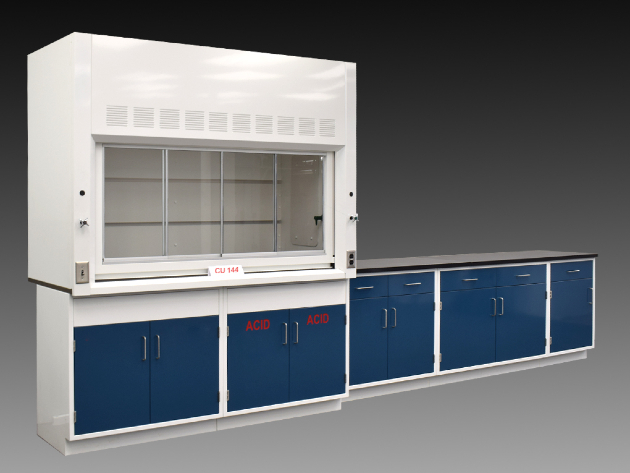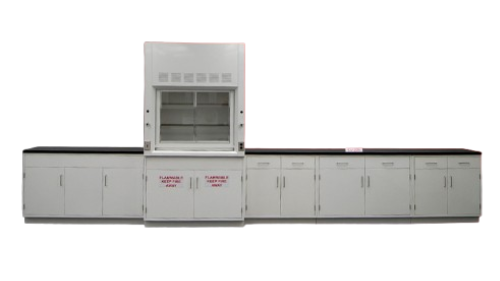Why Lab Design Drives Innovation
Innovation doesn’t happen by accident; it’s built into the environment. In research and development, the way a laboratory is planned can either accelerate breakthroughs or quietly hold them back. From workflow efficiency to cross-disciplinary collaboration, the right layout and equipment placement can spark creativity, improve productivity, and enhance safety.
Flexible Lab Spaces That Adapt to Changing Research
Science evolves quickly, and so should your lab. Modular casework, adjustable shelving, and movable benches make it easy to reconfigure work areas for new projects without costly renovations.
Laboratory cabinets with chemical-resistant surfaces and adjustable shelving provide storage that grows with your needs, keeping supplies accessible while maintaining a clean, organized environment.
Creating an Efficient Lab Workflow
A streamlined workflow starts with strategic zoning. Position related work areas close together to reduce travel time and minimize contamination risks.
For labs working with hazardous materials, strategically placed fume hoods allow dangerous processes to occur safely, without forcing researchers to transport volatile substances across the lab. This not only improves safety but also keeps processes moving efficiently.
Integrating Fume Hoods and Laboratory Cabinets into Your Layout
Fume hoods and laboratory cabinets aren’t just safety and storage tools; they’re central to how a lab functions.
- Fume hoods should be positioned in high-use areas while keeping clear paths for movement.
- Laboratory cabinets should be located near related workstations for easy access to tools, chemicals, and equipment.
- Mobile under-bench cabinets can double as flexible storage and work surfaces, making them ideal for adaptable research spaces.
Design Elements That Encourage Collaboration
Collaboration fuels innovation. To promote teamwork, consider:
- Informal meeting spaces with comfortable seating and whiteboards for quick brainstorming.
- Multi-purpose rooms that easily shift from team meetings to project planning.
- Technology-enabled collaboration, including large displays and video conferencing tools, to connect on-site and remote teams.
Safety and Compliance That Support Innovation
A well-designed lab meets or exceeds OSHA, NFPA, and other safety standards while staying flexible for research growth.
- Install ducted fume hoods where hazardous materials are handled most often.
- Use ergonomic cabinet designs to reduce strain and improve accessibility.
- Position safety equipment, such as eyewash stations and fire extinguishers, strategically for fast access.
Transform Your Lab into an Innovation Hub
Designing a laboratory for innovation requires balancing flexibility, workflow efficiency, safety, and collaboration. Well-placed fume hoods and laboratory cabinets are more than just equipment; they’re integral to creating a space where ideas thrive and research advances.
Ready to create a lab that inspires discovery? Our laboratory design experts can help you plan a space that supports your team’s safety, efficiency, and creativity. Contact us today to get started.



